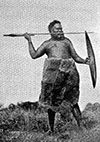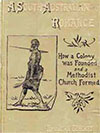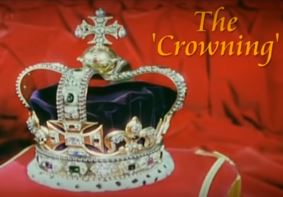THE CHRISTIAN SETTLEMENT OF ADELAIDE SOUTH AUSTRALIA
By Dr. Graham McLennan
Christian History Research
 https://www.chr.org.au/books/southland-of-holy-spirit/page13.php
https://www.chr.org.au/books/southland-of-holy-spirit/page13.php
On the 28th December, 1986 South Australia celebrated its Jubilee of 150 years, and it is timely to consider its Godly beginnings and the aspiration of its founders for the future.
The person who opened up the Southern portion of Australia for free settlement was Captain Charles Sturt, one of Australia's greatest and most heroic inland explorers. He was a man of courage and prayer, for "in many a scene of danger, of difficulty, and of sorrow he had risen from his knees calm and confident." 1
God spared his life on numerous occasions. He endured tremendous hardships when facing the harshness of the Australian inland, and, as Sturt completed his exploration with his men, who had complete confidence in and admiration for him, he "went down on his knees and with tears of joy offered his thanks to Almighty God."2
Charles Sturt loved the majesty of the bush and often "praised his God that He had done such wondrous things."3 It was Sturt who in February, 1834 wrote to the Colonial Office. "He prophesied that the men of South Australia would one day people the heart of the continent and that the Australian colonies would emulate America. He urged them to convince the aborigine that the white man was coming as a brother. He urged them, too, not to give the aborigine trifling presents but to protect him against violence and aggression, until that day when as children of the same heavenly Father, they had all learned to look at each other with love and charity."4
Then there were men who believed God had a special purpose in the Christian settlement of Australia. Men such as the Permanent Under Secretary of the Colonial Office, James Stephen, who "believed that the government of men should conform to the government of God"5, and encouraged Christian families to settle here, as well as being influential in the choice of Christian leaders in the colonising of the country.
Stephen's desire was to establish our nation as "a Christian virtuous enlightened state in the centre of the eastern hemisphere and within reach of the Chinese, Hindu and Mohammedan nations."6 Certainly we are seeing the continuing fulfilment of this great prophetic statement given to the Lieutenant-Governor of Van Dieman's land more than 160 years ago, as we see China opening up to the printing of the word of God, and as we see missionaries continuing to be sent out from this nation.
Many Christians were instrumental in the formation of South Australia, among them was a man named Robert Torrens who stated in a speech in the House of Commons in 1827 that "we are co-operating in the scheme of Providence and are the favoured instruments in causing Christian civilisation to 'cover the earth as the waters cover the sea!' "7
As chairman of the Colonization Commissioners when they first met in May 1835, he expressed the hope that they would be performing "an act of mercy for the natives of southern Australia by bringing them the gift of their great civilization and their Holy faith."8
Almost all of the directors of the South Australian Company were lay preachers. Robert Gouger, who was appointed Colonial Secretary was a devout Evangelical and even Wakefield acknowledged that without Gouger South Australia would not have been settled.9 It was Gouger who wrote a "Sketch of a Proposal for Colonizing Australia". He also organized the first public meeting for the free settlement of the South Australian Coast attended by 2,500 people in a Christian Centre, "Exeter Hall" in London.
George Fife Angas, who resigned as a Colonization Commissioner to take up a position on the board of directors of the South Australian Company, was also a committed Christian and the real father of South Australia's religious liberties. "My great object was, in the first instance, to provide a place of refuge for pious Dissenters of Great Britain, who could in their new home discharge their consciences before God in Civil and religious duties without any disabilities."10 It was Angas' hope "that South Australia will become the headquarters for the diffusion of Christianity in the Southern Hemisphere".11
"It was claimed that in fifty years he circulated over one million copies of scripture, many millions of tracts and two million copies of devotional books such as Spurgeon's Morning by Morning and Evening by Evening. 12
Angas provided a voluntary nondenominational elementary education for sixpence a week. The schools' sole textbook was the Bible!
Charles Mann, who believed it was his purpose to assist in the settlement "with the Bible in one hand and the axe (to clear the wilderness in the other"13 was appointed the first Advocate General.
The Colonial Manager was Samuel Stephens, appointed by George Angas because he had been converted at a Wesleyan revival and "fallen to the floor in agony and cried for mercy so piteously that the Holy Ghost had showered the blessing of salvation on him."14
Samuel Stephens arrived in 1836, at Kangaroo Island. However, he apparently had not learnt about the perseverance of the saints, developed a drinking problem, and was replaced by David McLaren, who wanted to enter the Presbyteryian ministry but became a Congregationalist then a Baptist.
The Colonial Office appointed Captain John Hindmarsh as Governor and on the 28th December 1836, he proclaimed South Australia a province, calling upon those present "to prove themselves worthy to be the founders of a great and free colony by their industry and sobriety, by the strict observance of the ordinances of their religion," and to help the natives "by promoting their advancement in civilization and, always under the blessing of divine providence, their conversion to the Christian faith."15
Two days later on the 30th December, Hindmarsh moved from Holdfast Bay inland and named Adelaide where, within eight years there were more preachers and places of worship, than the number in the first decade in New England, U.S.A. 16 and within ten years, over half the population of 9,000 were attending two of the denominational churches, Episcopal and Congregational, and further church buildings were necessary. From its settlement in 1836 to 1915 Sunday School enrolments far exceeded those of day schools!17
Lt. Colonel George Gawler arrived in the infant colony in 1838 to become the new Governor. A hero of Waterloo, was converted reading a book, Evidences of Christianity, and was determined to establish a Christian colony.
Many Christians settled in the colony, the first in the British Empire not to be officially aligned to the Church of England. A group of German Christians, who had been persecuted in Prussia for refusing to allow a secular sovereign to dictate to them about their faith, settled at Klemzig on the Torrens and at Hahndorf. These are the words of Pastor Kavel, their leader, when they swore allegiance in May, 1839:
"On our arrival here, we hailed this hospitable shore as a place of refuge to worship God without disturbance of our consciences, and entertained, and do still entertain, the hope to live and die here. We have found what we have been seeking for many years - religious liberty: we hailed and hail that sovereign under whose direction we are now placed: we consider her and her Government as ordained of God, and with all our hearts we are desirous of being faithful subjects and useful citizens. We have been very glad to profess this our heartfelt desire and deep conviction on Her Majesty's birthday: we consider this also as a profession of Christ our Lord and Saviour, who, through the King of Kings and Lord of Lords, has created all thrones, dominions, principalities, and powers, and who commands his followers to obey them."
Hebrews 11:32 says "And what more shall I say? I do not have time to tell about Gideon, Barak, Samson, Jephthah, David, Samuel and the prophets, who through faith conquered kingdoms, administered justice, and gained what was promised..." So also one could continue about many of the early settlers. People such as Edward John Eyre, Captain Barker, a staunch evangelical, T.Q. Stow, who commenced the first Congregational Church in Adelaide in 1837, Lord Glenelg of the Home Office who permitted the colonising of South Australia, or of Sir George Grey who believed it was such "a dreadful waste of God's bountiful gifts in Australia"18 and who shared with James Stephen the view that "prayer and meditation on God's Holy Word... were the inexhaustible, unfathomable source of all pure consolation and spiritual strength." 19
In conclusion, may we wish South Australians God's richest blessings for the future, and, to quote the words of Pastor Kavel: "May South Australia prosper; and all its inhabitants, its immigrants, and all the natives grow together as one blessed nation labouring unanimously for the advancement of those great objects," and of Captain Charles Sturt: "May the inhabitants of South Australia continue to deserve and to receive the protection of that Almighty power, on whose will the existence of nations as well as that of individuals depends!"20
- C.M.H. Clark A History of Australia Melbourne University Press 1973 Vol II p.97 (Used with permission)
- Ibid. p. 101
- Ibid. p. 98
- Ibid. Vol. III p. 46
- Ibid. Vol. II p. 83
- Ibid. p. 110
- D. Pike Paradise of Dissent. South Australia 1829-1857 Melbourne University Press 1957 p.95
- Clark loc cit Vol. III p.48
- Pike loc cit Vol. III p. 99
- Ibid. p.130
- Ibid. p. 138
- Ibid. p. 160
- Clark. loc cit Vol. III p.49
- Ibid. p. 51
- Ibid. p. 55
- Pike loc cit p. 264
- Ibid. p. 513
- Clark loc cit Vol. III p.41
- Ibid. p. 40
South Australia's Christian Heritage Mortlock Chamber State Library of South Australia
This exhibition is dedicated to South Australia's founding men and women who brought to the state a rich Christian heritage that helped shape its unique identity. Many Christians believed that South Australia was distinctive because, unlike other Australian colonies, it was established by godly men and women on a religious basis. They saw it as a colony founded on the principles of religious and political liberty: a great and free colony...under the Blessing of Divine Providence as stated by Governor Hindmarsh in his Proclamation address on 28 December 1836.
During the nineteenth century, Christians worked vigorously to spread the Word, on horseback, by paddle-steamer, bicycle and camel-buggy; in the German, English, Ngarrindjeri and Aranda languages; in the bush, in farmhouses, stone chapels and cathedrals. Adelaide became known as 'the city of churches'.
 https://www.slsa.sa.gov.au/mortlock-chamber-exhibition-bays
https://www.slsa.sa.gov.au/mortlock-chamber-exhibition-bays
Also read...
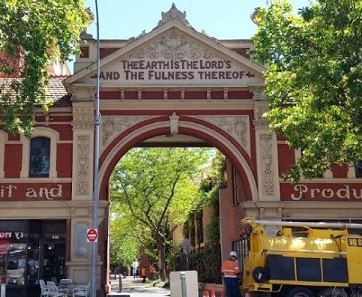
The original East End Market Adelaide SA, Eastern end of Grenfell Street on the northern side. Picture supplied by Rev Ian Clarkson
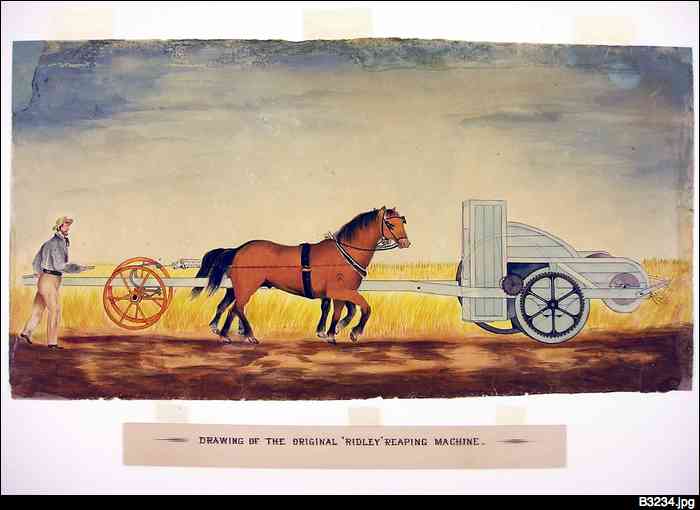 GOD'S PROVISION FOR A HARSH LANDThe earliest settlers on the Australian continent were confronted by a somewhat inhospitable land subject to low rainfall, unsuitable soil types and the threat of flood or fire. Under these conditions European style intensive agriculture was confined to the very limited areas of higher rainfall. The hand of God is clearly seen in the colonisation of this land as He provided, early in the development of the colonies, an animal (the Merino sheep) and a plant (wheat) which would survive well under the adverse climatic conditions and bring self-sufficiency and prosperity to the land. Wheat has been the major crop in area and value of production since the first settlement of Australia by the British. By the standards of European agriculture crop yields per acre were very low. The important factors in the success of wheat as a crop were the exceptionally dry weather during harvest, relatively flat land and mechanisation. No-one will deny that God provided the first two but it is less well known that He also brought from England a man with deep Christian conviction who lived in this country for only fourteen years sacrificing his own comfort and security to develop the machinery needed to harvest the wheat from the vast tracts of land. In December, 1887 the leading journal of South Australia, the Register, published a notice of a public loss. Here is part of that notice: "News has been received by cablegram from England of the death of Mr. John Ridley, whose name is a household word in Australia in connection with the invention of the reaping machine, or as it is more familiarly known, the "Stripper". No one will deny that Mr. John Ridley rendered immense services to this Colony by his application of the original conception to the condition of agriculture in the early days of Australia. Moreoever, what he did was absolutely without fee or reward. He generously gave to South Australia the full benefit of his invention... Such a man was John Ridley, and his memory will occupy an honoured place in the annals of Australian inventors."(1) EARLY LIFE AND CONVERSIONJohn Ridley was born in 1806 in West Boldon, County Durham, England. His parents were greatly influenced by the Wesleys who they probably had seen as children and family correspondence of the period indicates a strong personal devotion to the Lord. Growing up in a Christian home, John Ridley was constantly confronted with the need for a personal faith and in later life expressed his childhood suffering from his sense of sin. On April 23rd, 1819, at the age of twelve he was praying for assurance of forgiveness and salvation, "he lay stretched out in the straw, praying for grace and pardon. Suddenly a stream of bright light shone around him, and, at the same moment a great peace filled his heart."(2) He later wrote of his strong sense of God's goodness and his prayer that day was "Let me be anything so that I may serve Thee." He thought "My natural self I wish to cease to live, that I may be with Christ a new creature, and present my body a living sacrifice... all things are possible to God, to Christ, that power of God in man..."(3) From that day John's life changed. Although he could identify weaknesses in Methodism, he saw benefit in its training and by the age of eighteen was a lay preacher. THE CALLINGLiving within eight miles of the Ridleys in England was George Fife Angas, a man of wealth and power who in 1835 threw all his energies into the South Australian Land Company. Angas declares this to be a great work to which God called him. He wrote in his diary: "June 4, 1835 - For the success of the colony I look to God, and to Him will I look. America was founded on that basis by God's people in a tempest; this Colony will, I hope, be raised upon a similar foundation, in a calm. If I can get pious people sent out to that land, the ground will be blest for their sake; and if justice be done to the aborigines as was done by William Penn, then we shall have peace in our borders, for I reason that the principles of God's government will apply to South Australia as to elsewhere."(4) At this time John Ridley asked one of his friends "Will you pray for me that I may be directed to some place where I am really needed and where I may be of some use in the world?" (5) This was in 1837 and the Colony of Mr Angas was still a dream but John Ridley caught the vision and in 1839 took his wife and two infant daughters and boarded the good ship Warrior bound for Port Adelaide. John was a miller by trade and brought with him one of the original James Watt steam engines, intending to serve the colony by milling the grain. THE RIDLEY FAMILY IN SOUTH AUSTRALIAGod began to guide John's contribution from the very moment he stepped from the ship. He trod on a piece of newspaper which attracted his attention and he found in it an announcement of a proposed meeting to consider the problem of turning the wheat harvest to use. This was God's confirmation of His direction in John's life. He soon took up land at Hindmarsh, a mile from Adelaide where he set up a steam flour-mill and ground the first flour in South Australia - first fruits of many harvests. The abundance of harvests created another problem - shortage of labour for the reaping. Things seemed to come to a standstill by 1843. Shortages were experienced with flour reaching twelve pounds per bag, mutton 2/6 per pound, butter 5/- the pound and vegetables not procurable. John began to see a great need for engineering ability and mechanisation of the harvest. A local steam engine was notable for its poor workmanship but John's advice went unheeded at that time. Tragedy struck the Ridley family when their four-year-old daughter went too close to the fireplace. Her pinafore caught fire and though the flames were quickly extinguished, the shock proved fatal. Soon after this the Ridleys lost a boy of seventeen days and a girl of eight months. John wrote: "I think I accept as from God the loss of my eldest child. But I cannot say as much for the other two, a fine boy of seventeen days and a girl of eight months. I think I broke down after al my endeavours to be resigned. But how much more right had you and many others to think so, who probably never do it? I do believe in God's goodness now; I am not sure that I did not then think more of His vengeance than His goodness. The creed of Christendom is very terrible. But I thank God I believe in Jesus and not in any Church. The Church soon became apostate from the faith, and has never recovered the truth that God is love."(6) John Ridley, despite hardship and personal tragedy, was still a man full of original mechanical ideas. He hated waste and was a determined man who expected his orders to be carried out. He had attempted to build a structure to raise water for irrigation of the Adelaide plains by means of a horizontal windmill. His workshop was full of mechanics and his yard full of patterns and old machinery. Having been kept awake one night by a baby crying, he invented an apparatus to rock the cradle. Other inventions included a bone crusher to make use of waste bones, improved winnowing machines for cleaning wheat, a safer pearl barley machine, a machine for preserving whole meat carcases and many others. As well as this he built a chapel and assisted in forming a mechanics institute. His missionary zeal was strong and he was particularly concerned for the salvation of the aborigines. He wrote: "As to the natives: Once having felt that men are perishing, I do not know that any circumstance is needed for inducing exertion to save them from perdition. Yet, viewing the wreck of beings, made in the image of God, and redeemed by the blood of our Lord Jesus Christ, as exhibited here, does deem to demand a 'deeper sigh'..."(7) THE INVENTION OF THE STRIPPERThe first reaping machine was invented by the Gauls centuries ago and two other machines developed by Bell (1826) and McCormick (1834) had appeared in California. John Ridley invented his "Stripper" in 1843-4 and it is said that the idea came to him while walking in the wheat fields with his wife who dropped her comb. John picked it up and in doing so stripped the head from a wheat stem. "The original Australian harvesting machine comprised a horizontal comb and revolving wooden beaters driven by belts connected with the carriage wheel axles. Horses were attached to a pole at the rear of the Stripper and, as they pushed it through the crop, the comb gathered the wheat heads only. The beaters knocked the heads into a box-like structure.(8) The unique aspect of this invention was the striking of the heads instead of cutting them off. The original "stripper" could harvest an acre in an average of 1 hour and 26 minutes at a cost of only 2d. per bushel for harvesting and less than 1 1/2d. for preparation for market. This was only a third of the cost of conventional hand reaping and the use of the machine meant that thousands of acres could now be harvested which would have perished because of lack of labour. John Ridley's invention was hailed as a great boon to the rural economy of South Australia. RECOGNITIONTribute was paid to John Ridley by many people and in many ways for his selfless gift to the colony. Here is an extract from Mr. Foster's book "South Australia: its progress and prospects" (1866): "The old proverb which unites necessity and invention, was not falsified at this time. The extremity to which farmers were reduced had excited the sympathy and aroused the genius of a colonial, who, but for this impulse, might never have awoke to the consciousness of his ability to confer such extensive benefits upon his fellow creatures; and the invention now so extensively known as "Ridley's reaping machine", was the result. Mr. Ridley, in inventing this machine, not only produced one of the most useful implements ever met with in the Colonies, but produced it at a most opportune time, when farmers were turning in despair from the fields whitened with the fruits of harvest, which they had no means of gathering in - and what enhanced the value of Mr. Ridley's mechanical skill was, that disdaining to profit by the necessities of his fellow-colonists, he reserved no patent right to his invention, but gave it as a free gift to the Colony and to the world."(8) RETURN TO ENGLANDOn March 18th, 1853 the Ridleys set sail for England on the steamer Melbourne. John had every intention of returning to his busines interests in South Australia but once he reached England he settled down amongst his old friends and never returned. His latter years were spent making further inventions, taking part in scientific gatherings and undertaking charitable works. He was a deeply spiritual man and did for a time delve into the area of spiritualism. However, in 1870 he recognised the foolishness of this and wrote: "I have found perfect satisfaction in receiving the Lord Jesus as the spring of spiritual life, as a living and ever-present influence and power through the Divine Spirit."(9) John passed from death to life on November 24th, 1887. His life and testimony stand today as an outstanding demonstration of God's hand in the establishment of this nation and an example of what God will do with a life submitted to Him. |
Footnotes
- Ridley, Annie E., A Backwards Glance - the Story of John Ridley, J. Clarke and Co., London, 1904, p.1-2
- Ibid., p. 25
- Ibid., p. 25-26
- Ibid., p.45
- Ibid., p.48
- Ibid., p.65
- Ibid., p. 70
- Wheelhouse, Frances, Digging Stick to Rotary Hoe - Men and Machines in Rural Australia, Cassell Australia, Melbourne, 1966.
- Ridley, Annie E., Ibid., p.314

